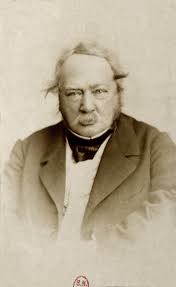
Paul DeKock
Charles Paul de Kock (May 21, 1793 in Passy, Paris - April 27, 1871 in Paris) was a French novelist. His father, Jean Conrad de Kock, a banker of Dutch extraction, victim of the Terror, was guillotined in Paris 24 March 1794. His mother, Anne-Marie Perret, née Kirsberger, was a widow from Basel. Paul de Kock began life as a banker's clerk. For the most part he resided on the Boulevard St. Martin. He began to write for the stage very early, and composed many operatic libretti. His first novel, L'Enfant de ma femme (1811), was published at his own expense. In 1820 he began his long and successful series of novels dealing with Parisian life with Georgette, ou la Nièce du tabellion. He was most prolific and successful during the Restoration and the early days of Louis Philippe. He was relatively less popular in France itself than abroad, where he was considered as the special painter of life in Paris. Dostoevsky, in his novel Poor Folk (1846), wrote that reading a novel by De Kock was not becoming for ladies<Poor Folk, Everyman's Library 1948 p. 63>. James Joyce's Ulysses includes references to Paul De Kock, including innuendos on his name in the Calypso, Sirens and Circe episodes. His novel The Girl with the Three Pairs of Stays is also mentioned in the Circe episode. Major Pendennis' remark (in the novel "Pendennis" by the English author William Makepeace Thackeray) that he had read nothing of the novel kind for thirty years except Paul de Kock, who certainly made him laugh, is likely to remain one of the most durable of his testimonials, and may be classed with the legendary question of a foreign sovereign to a Frenchman who was paying his respects, Vous venez de Paris et vous devez savoir des nouvelles. Comment se porte Paul de Kock? The 1920 Encyclopedia Americana attributes his greater popularity abroad to his style, which it describes as his worst feature . . . barely presentable, a fault evidently due to deficiency of education. . . . the defects of style disappear in translation. The disappearance of the grisette and of the cheap dissipation described by Henri Murger practically made Paul de Kock obsolete. But to the student of manners his portraiture of low and middle class life in the first half of the 19th century at Paris still has its value.
